Natalie and I were not hitting it off. In fact, I had become convinced she was trying to kill me.
I’m a non-confrontational person, and I don’t like it when someone’s not my friend. But in this case, our rocky relationship was especially alarming: Natalie was an 1200-pound quarter horse, and I was on her back. Precariously, I might add.
As we trotted up a steep mountain slope, another horse and rider pulled alongside us. Natalie’s ears flattened and her back leg shot out, blasting the other horse with a nasty kick. She quickly lunged to bite. The other rider pulled away but Natalie continued to spin in rage.
She settled, and as we again began picking our way up the slope, I could again take in what rancher Glenn Elzinga was trying to accomplish here on this rugged Central Idaho range. He shared this country with wolves, imperiled species like bull trout and sage grouse and sensitive habitats.
Glenn had long believed that cattle ranching could have a more positive impact on the land and wildlife around us. And to do this, he’s now incorporating ancient herding techniques, practicing what he calls “one of humanity’s oldest professions.”
But that doesn’t mean it’s easy. Up ahead of me and Natalie, Glenn’s voice boomed across the mountain. “We are dealing with rugged terrain and a lot of variables here,” he said. “You are working with horses and cattle and wolves and all these other creatures, and they often have their own agendas.”
He looked at me. “You can see how that could be difficult, out here in country like this.”
I looked down at Natalie, the one animal whose agenda I had to deal with at the moment. Yeah, I could see the challenge here. Could I ever.
Making a Home on the Range
I first met Glenn Elzinga at a Boise farmers market in the early 2000s. Tall, dressed in denim, with a bushy mustache, he stood out in the crowd. In addition to selling excellent grass-fed beef raised on his Alderspring Ranch, he was a natural storyteller and had a keen wit. I liked to stop by his booth and hear his ideas on ranching.
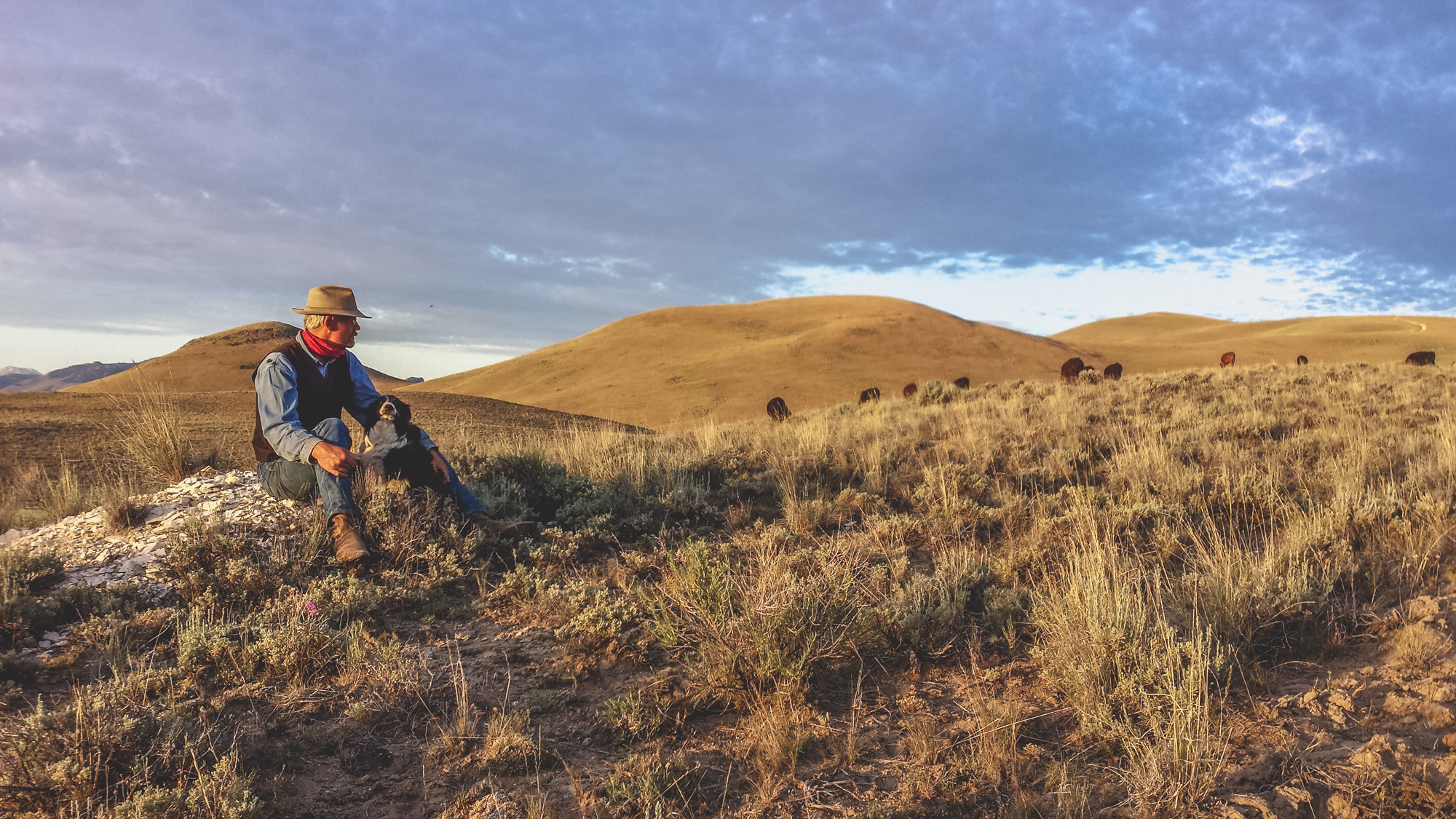
A few years later, he worked with The Nature Conservancy to purchase a ranch in Central Idaho’s Pahsimeroi Valley. I was director of communications for the Conservancy in Idaho at the time, so I learned more of his story. Glenn and his wife Caryl both had careers in natural resources but wanted to spend more time with their seven daughters. They had a vision for ranching, serving as good stewards of the land while also producing high-quality beef.
For years, they rented pastures but that didn’t allow them the control they wanted. The ranch they purchased, like many in the Intermountain West, included public grazing allotments. They were entitled to graze their animals on a defined area of public lands. Ranchers typically turn their cattle loose on these lands in the early summer, and then rounded them up in the fall.
Glenn believed that by producing organic, grass-fed beef, he could ranch sustainably and produce a better product. His Alderspring Ranch beef began earning acclaim from top chefs and winning taste tests. When food journalist Mark Schatzker searched for the perfect cut of beef – documented in his book Steak – his quest ended at Alderspring Ranch.
But that wasn’t enough for Glenn. Always curious, he wanted to find better ways to ranch on public lands.
I had written a lot about the Elzingas during my time with the Conservancy’s Idaho Chapter, but I hadn’t seen them for several years. When Glenn invited me to take a horseback tour of his public lands allotment and discuss a new technique he was employing, I was intrigued. The trip sounded even better when I learned that two of my favorite Nature Conservancy colleagues, Dayna Gross and Mark Davidson, would be joining.
“It will be an adventure,” Dayna promised.
She did not lie.
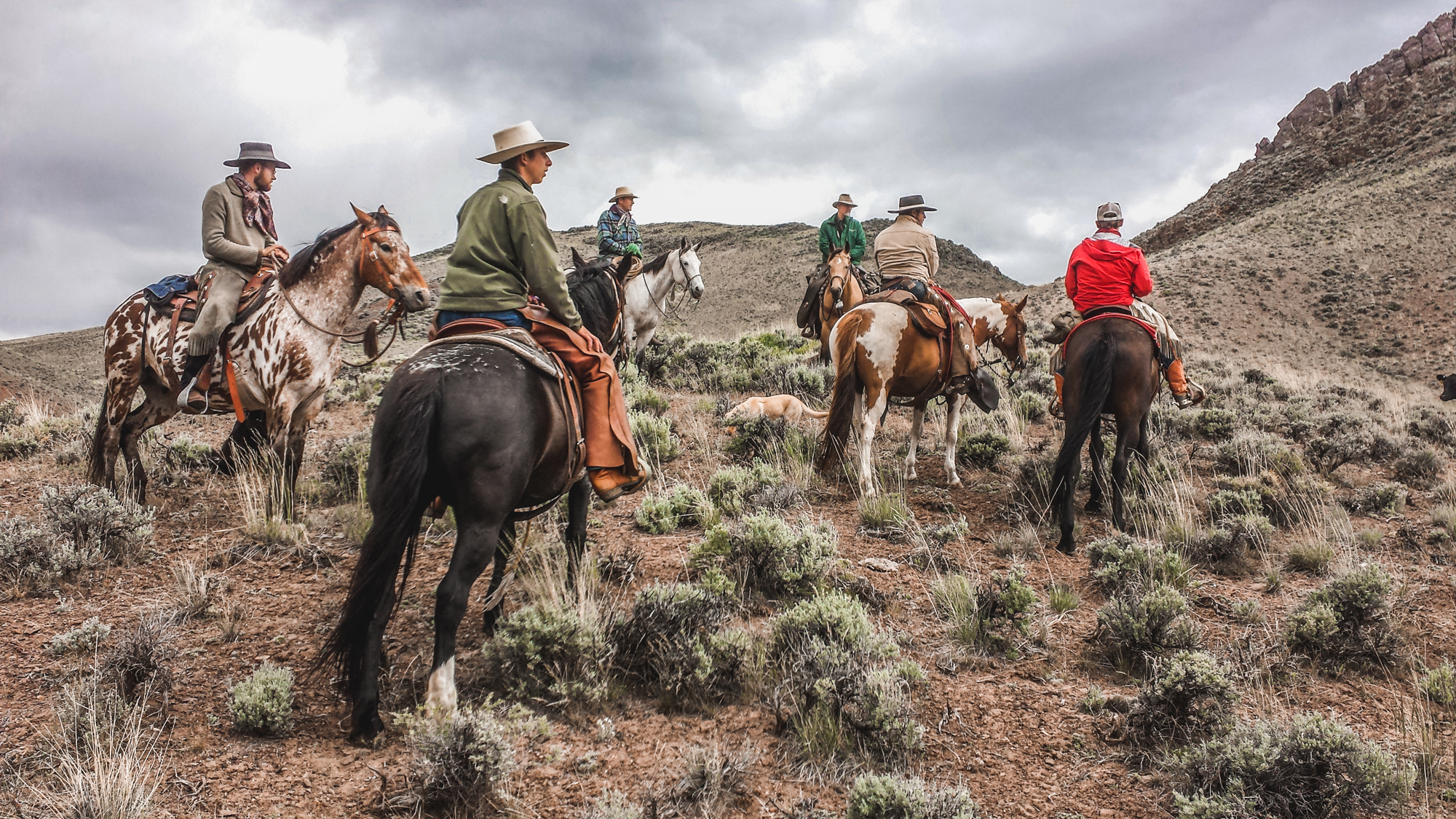
A Long Day Ahead
I started to have my misgivings early the morning of the tour. We would be joined by state and federal land management staff, who were also interested in Glenn’s grazing techniques. As they spilled out of their trucks, I noted they all donned well-worn chaps. They hoisted saddles and reins with the easy calm of experienced riders.
I tried to calm my growing sense of unease, but the increasing rain and wind weren’t helping.
Glenn led me to Natalie. “She’s really calmed down in the past few weeks,” he said. “She’ll be fine.”
There were 17 horses and riders on the trail, and soon we headed up the mountain. We quickly fell into line along a well-worn trail, but a half hour later veered off, heading down a steep slope criss-crossed with fallen timber. Natalie began shaking her head. “Watch out for sharp branches,” Glenn called out. “It really freaks the horses out. And you don’t want a blow up in this stuff.”
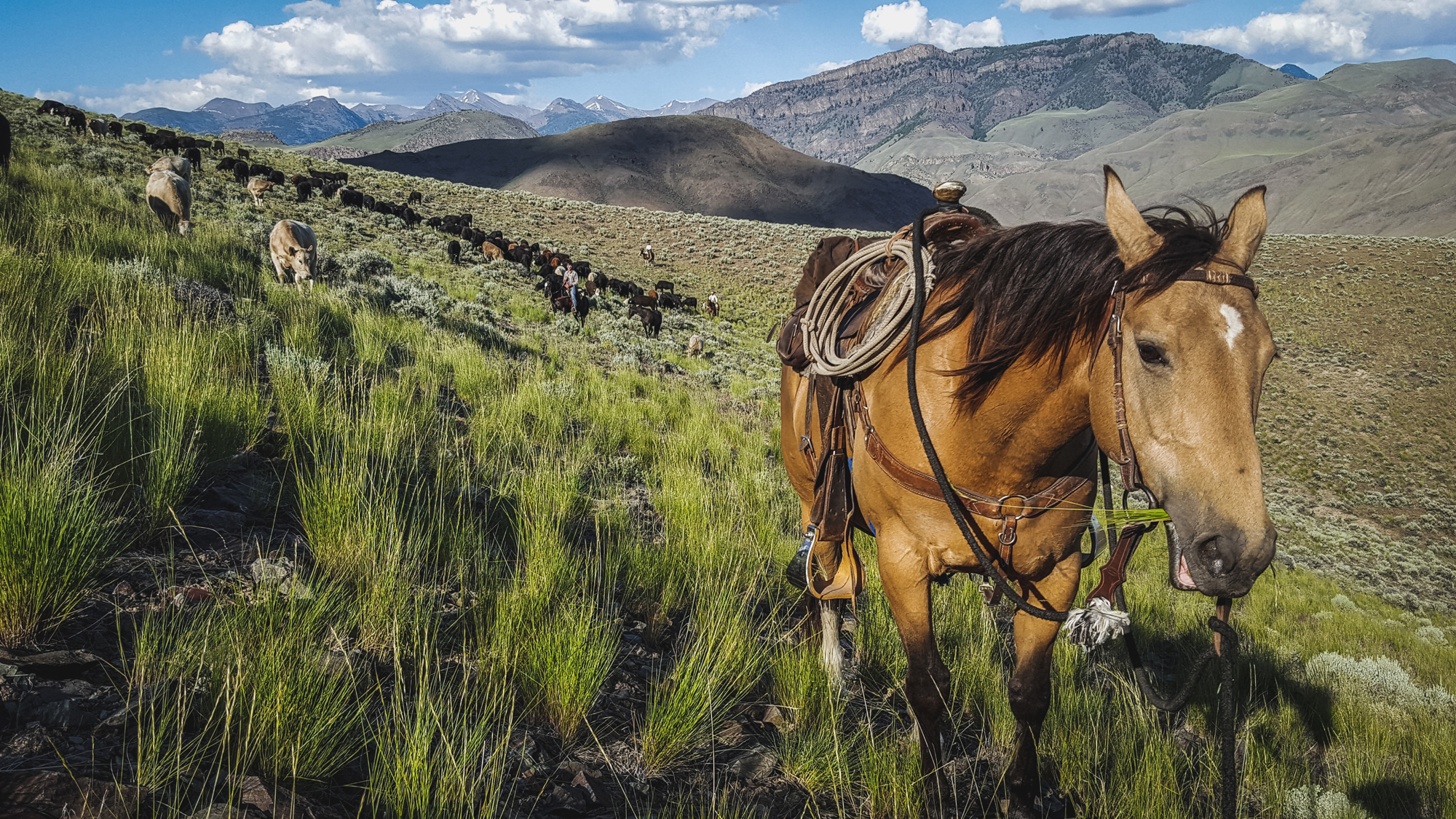
I definitely did not. I rode on, my anxiety blossoming into full-blown panic. And then we emerged into an open meadow. I breathed. I could do this.
Glenn’s daughter Melanie rode up alongside him. “Where to next, Dad?” she asked.
He pointed to a peak in the distance. My eyes tracked all that was between us and the destination: more steep slopes, more fallen timber, much of it far more gnarly than what we had just traversed.
I looked over at Dayna, desperately seeking an encouraging word.
“It’s going to be a long day,” she said.
More true words from my friend.
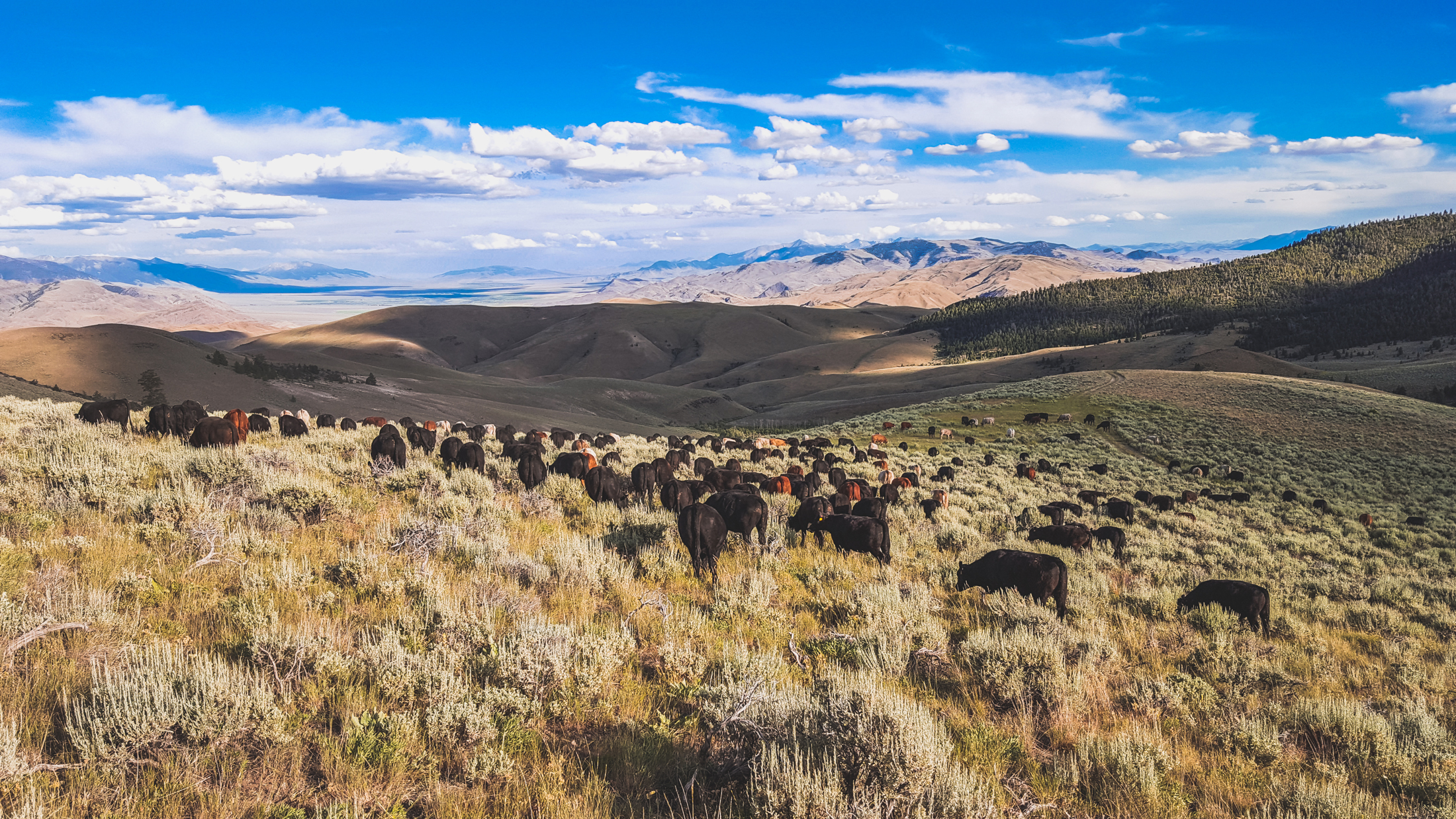
When the Big Dogs Come Calling
Glenn’s no stranger to long days, and his involve much bigger challenges than an unruly horse. It was one of those challenges that led him to adopt the new ranching practice.
As he bought groceries at the local store, a neighboring rancher approached him. “Your cattle are headed right towards a den of big dogs,” he said.
“Big dogs” is the local term for wolves. Glenn had already lost $20,000 worth of cattle to wolves, so the rancher’s pronouncement alarmed him. He checked with the local Idaho Department of Fish and Game office. The rancher was right: there was a radio-collared pack of wolves, and in a few days they would be meeting his cows. These meetings never end well.
“You’re within your right to have those wolves killed,” the agency staff person said.
And Glenn knew that was true: wolves were routinely killed for livestock conflicts. “I actually like wolves as an animal,” he said. “Wolves are here. They’re not going away. I thought there had to be a way to deal with this without confrontation.”
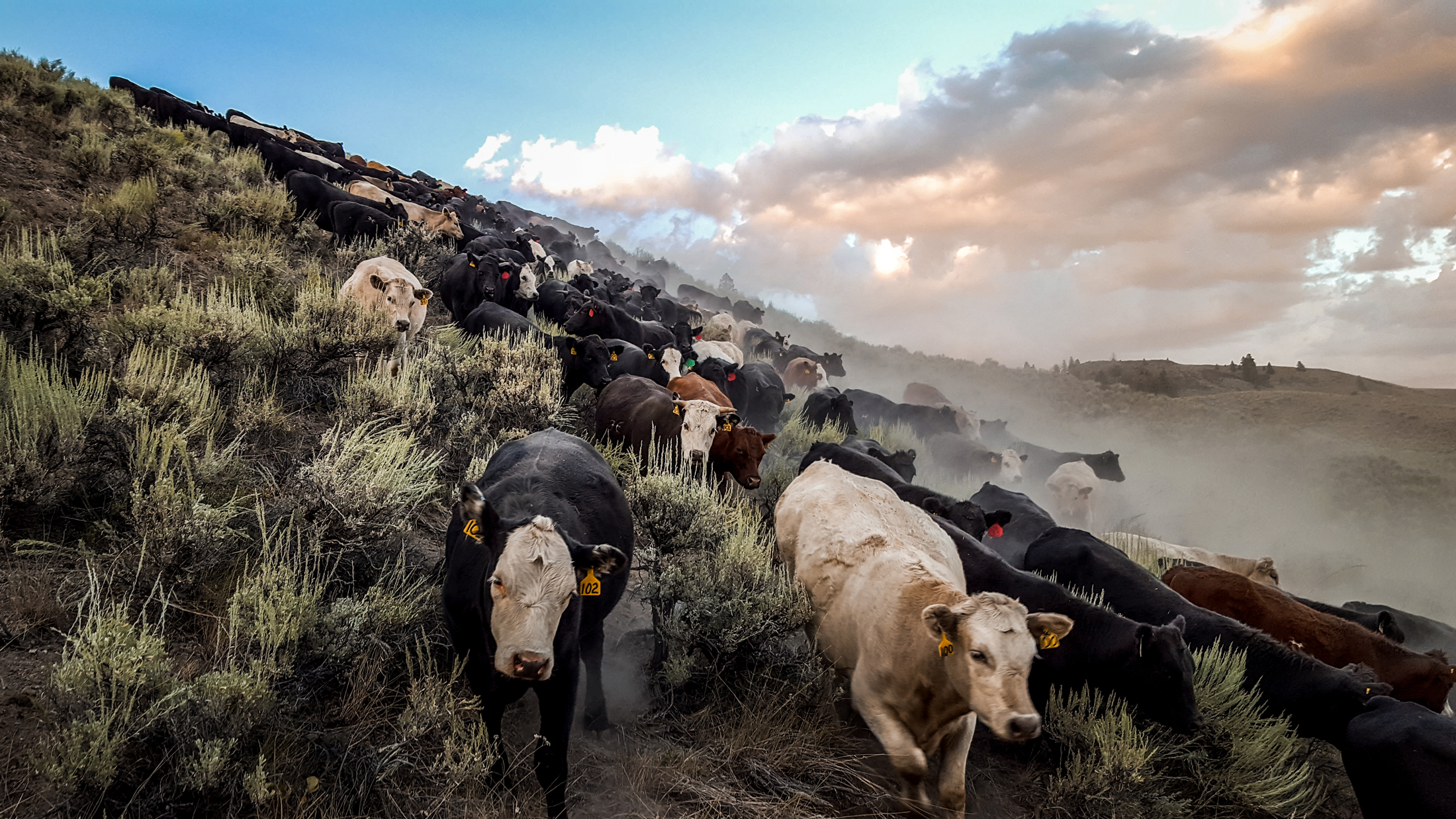
He moved his cattle off the public range and back to his private ranch, far from the predators. That was a short-term fix. “We were scratching our heads, trying to find a way that was proactive rather than reactive,” he said.
Months later, he was Christmas caroling at the home of an elderly rancher who collected Western memorabilia and art. Glenn looked at the wall and his eye caught a Charles M. Russell painting.
“There were cowboys on the range with a thousand head of cattle behind them,” he said. “This was in the days before barbed wire. These guys lived with their cattle. There were rustlers and grizzlies and wolves. They needed to protect the cattle and move them to the best grass they could find.”
Glenn couldn’t get that image out of his mind. They protected the cattle by staying with them.

“Why couldn’t we do the same thing?” he thought. “We could stay with the cattle and move them where we want to go. We could add in ecological objectives so that we could keep cattle out of sensitive habitat, and graze on the best quality grass.”
Herding this way is one of humanity’s oldest professions, and is still practiced by herding cultures from the Masai in East Africa to Mongolian herders on the Asian steppe.
But for a century or more in the American West, ranchers have turned their cattle loose on public lands allotments. “The cattle go downhill to water, and stay in the riparian areas,” he says. “The ranching becomes reactive. The goal is to keep them out of areas. Keep them out of sage grouse habitat, keep them out of creeks. You herd them out, and they would move back down at night.”
With 70 square miles to patrol, including 50 miles of creeks, finding all the cattle proved an impossible task.
Glenn’s plan was to herd the cattle where he wanted them to go, what he calls in-herding. They could plan the herding around ecological objectives. His allotments are home to sensitive species like sage grouse, bull trout, chinook salmon and steelhead. Aspen groves and streams have been hammered by generations of grazing.

“It’s really such a simple idea,” he said. “We’re going to be with the cows and direct them where to go rather than just let them loose and let them go where they want.”
It is simple, but he had to figure in the complexities of cattle, horses, wolves, endangered species and terrain. And people.
“Really, you have all these factors out here and the toughest of all to manage is people,” he said. “You need someone who has strong horsemanship and can move cattle. But they also have to buy into the ecological goals. That’s the hardest to find.”
An ecologically minded herder has to know vegetation and weeds. They have to know how wolves behave. They have to know what a healthy aspen grove looks like.
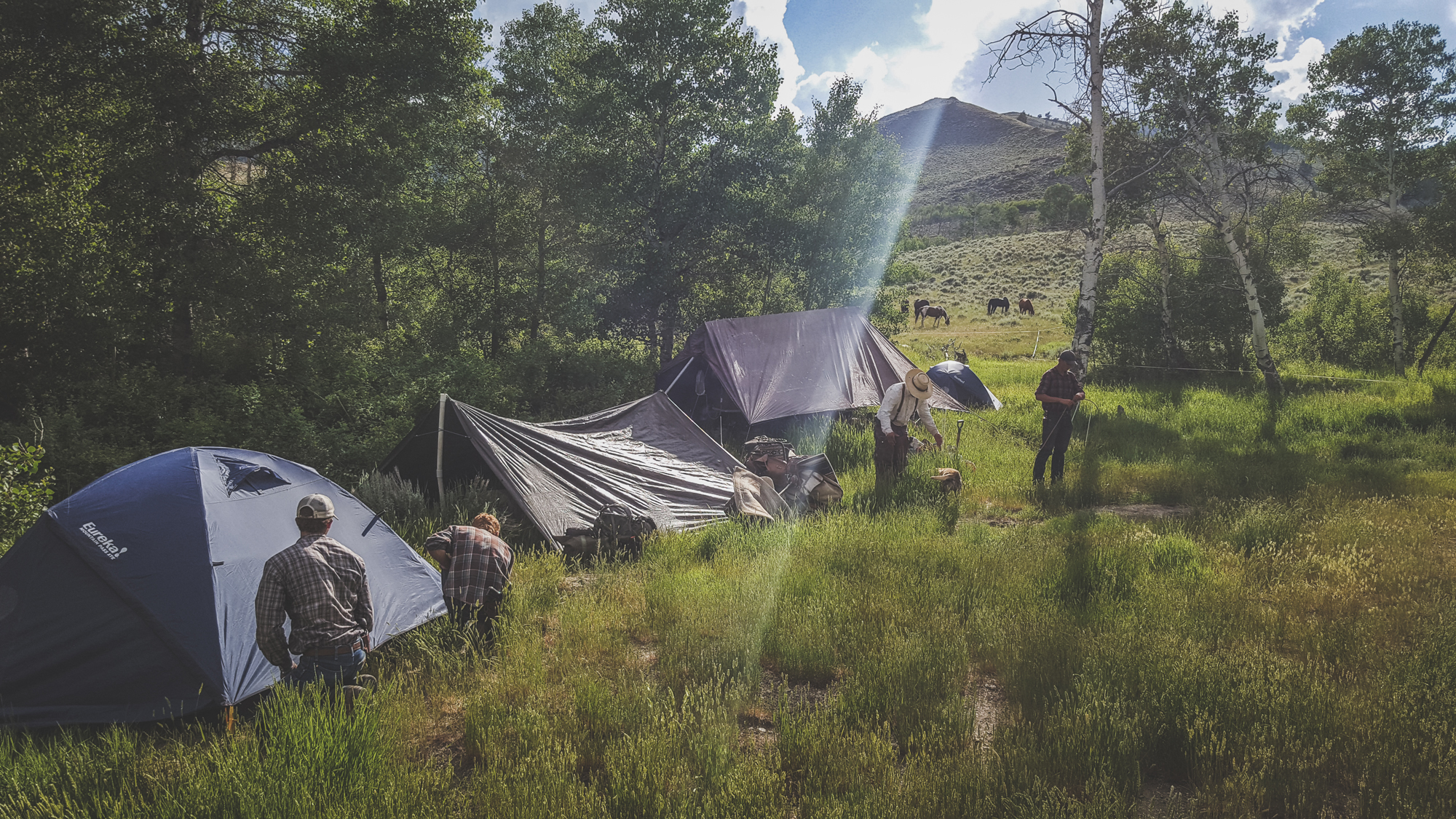
“The team dynamic is so important,” he says. “If someone on the team hasn’t embraced all aspects of herding, it affects that dynamic. Things start blowing up. Out here, you really do not want things to blow up.”
Into the Woods
A friend of mine on another backcountry horse trip once advised me that the best thing to do is “trust your horse.” After a half day in the saddle, I didn’t trust Natalie. And we had just entered the gnarliest slope of the trip, filled with fallen trees, boulders, impenetrable brush and marshy creek bottoms.
Through the thick cover, I couldn’t see most of the horses. The participants called back and forth to each other, directing us to the best routes. I could hear anxiety even among the experienced riders.
“Glenn,” one of them called out. “If this is where you take your friends, where do you take your enemies?”
Natalie picked her way down the slope towards a creek bed below. “When she gets to the creek, she’s going to jump,” Glenn’s daughter Melanie warned.
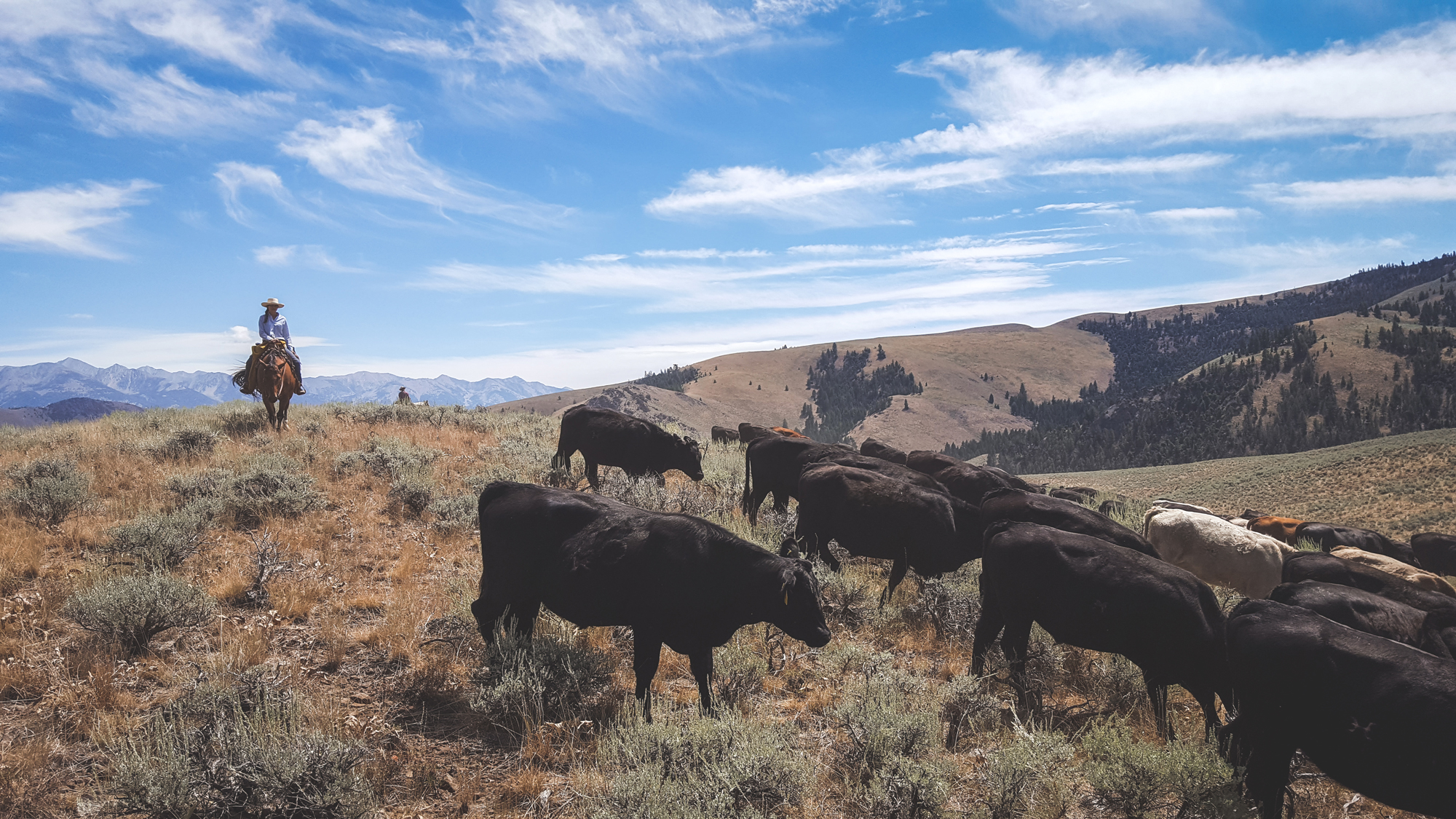
I hopped off. I did not want to be on a jumping Natalie, especially in this forest filled with objects that could impale me.
“Of course, with you on the ground, she’s now going to jump on top of you,” Melanie followed.
Faced with Sophie’s choice, I chose option C: Part ways with Natalie. I let go the reins and Natalie promptly bolted, disappearing from sight. I accepted the long, cold, wet, lonely hike out of the wilderness with joy. At least I would not be atop that mare.
I picked my way through the brush and emerged onto another mountain slope. I began climbing up to the top. Suddenly Glenn appeared on the horizon.
“Matt, don’t worry, we caught Natalie and she’s up here waiting for you,” he called.
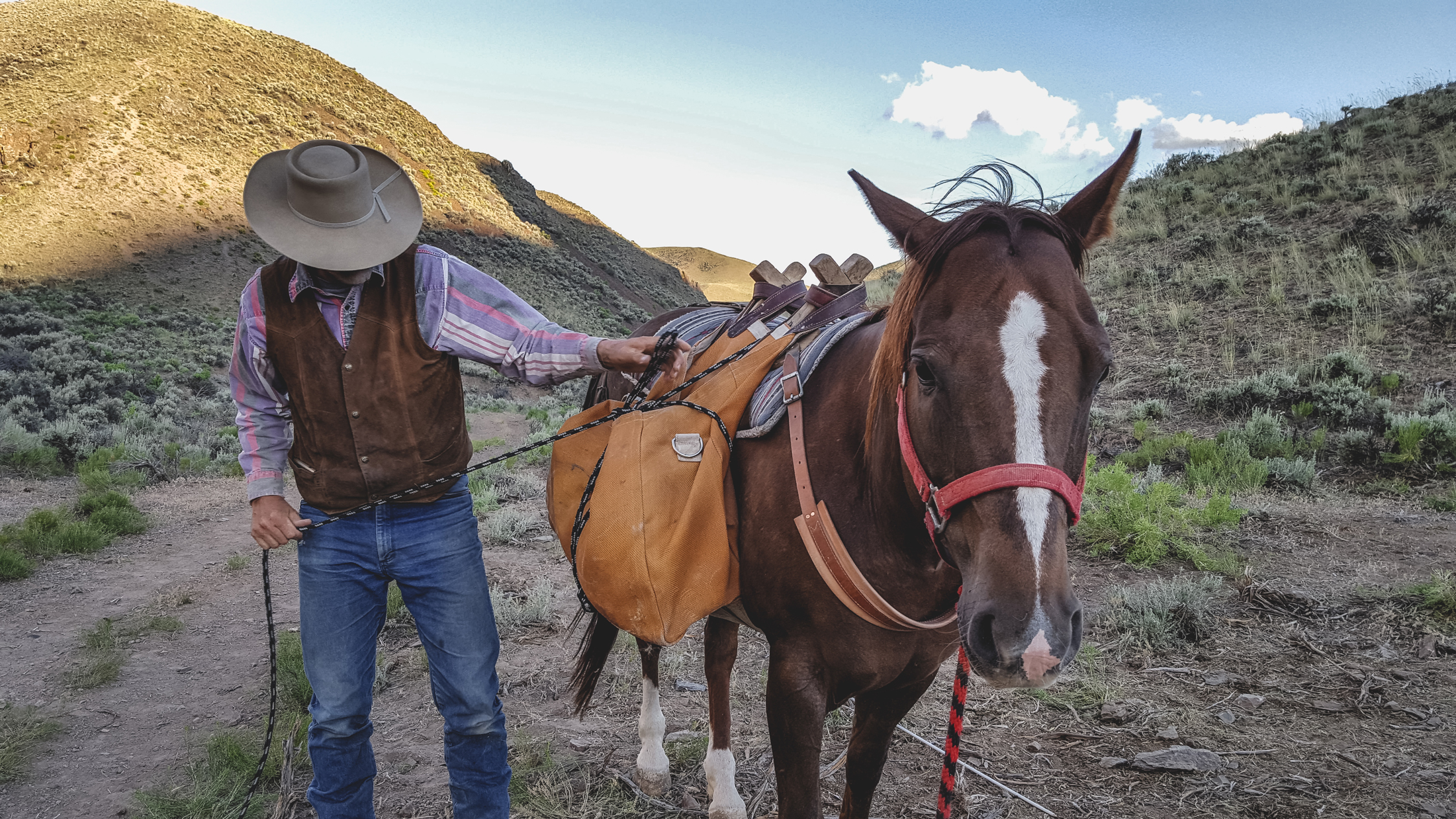
I gave a half-hearted wave. “I was afraid you were going to say that.”
The Smartest Animals on the Range
The Elzingas have now completed their second season of in-herding. They practice what Glenn calls “meal planning” – developing a plan that keeps moving cattle towards the best rangeland.
“We aren’t pushing cattle with whips,” he said. “We want to have the cattle want to go where we need them to go.”
Even in this short time, Glenn sees the results, which is why he arranged this tour (although admittedly I have missed many of the highlights).
“Cattle were using the riparian areas extensively,” he said. “Now they are completely unused, unless there is an ecological reason for cattle to be there. I show pictures of riparian sites before and after in-herding, and people in the audience question whether it’s really the same place.”
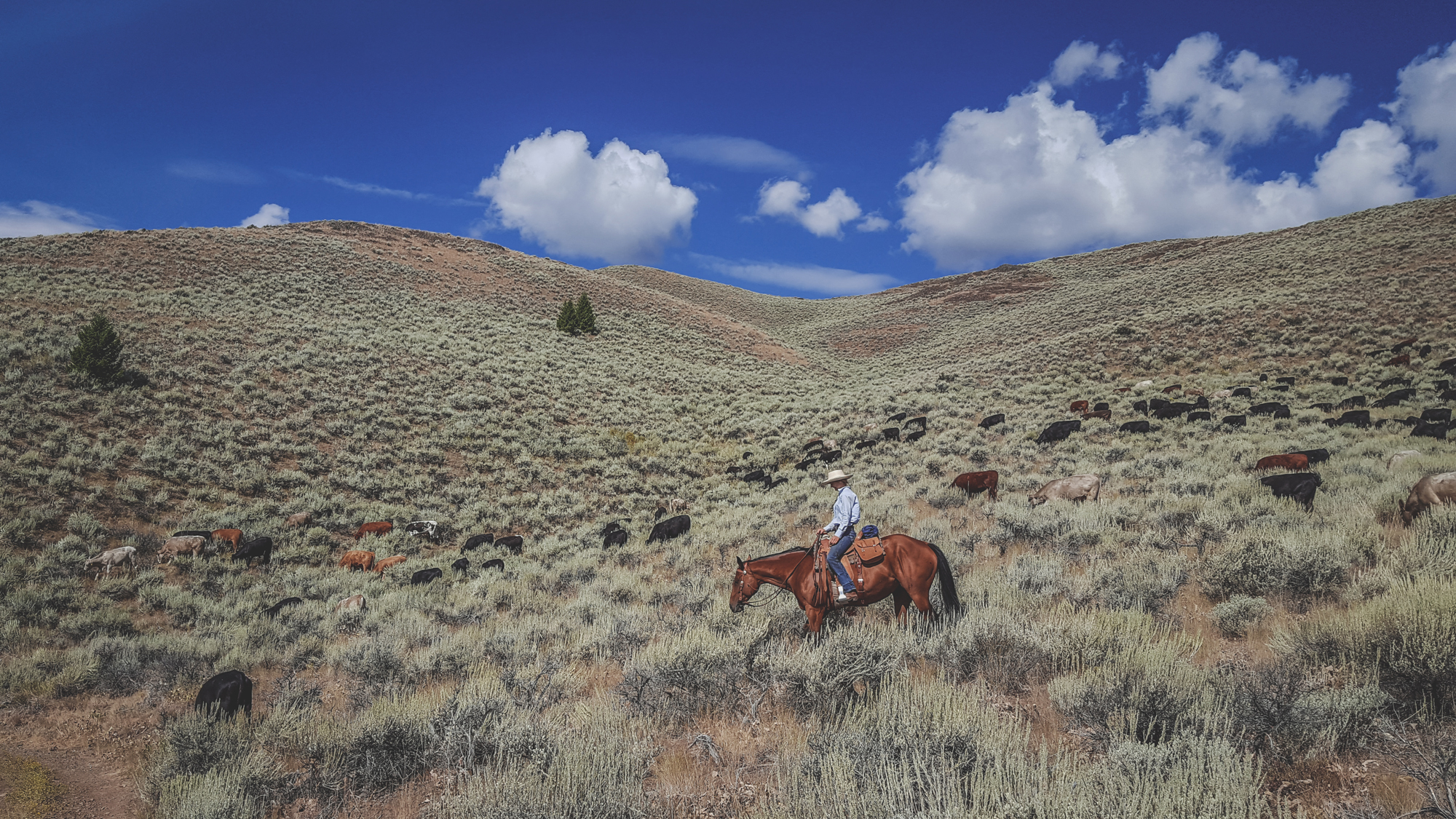
And wolves? The big predators were, after all, what started this project. “We have no problems with wolves,” he said. “We have heard howling, but we have not lost an animal.”
“The biggest deterrent to wolves is human presence,” he continued. “Wolves are the smartest animals on the range, by far. We keep the cattle with us every night in small, temporary, hot-wire enclosures so they don’t wander off. And we’re with them. Wolves don’t want to be around us.”
Glenn continues to refine his techniques, reading, observing, talking to professionals from a variety of backgrounds. “I have always wanted to fuse ranching and science,” he said. “There’s a lot of science we can integrate into our management. We want to proactively wield tools that enhance ecological conditions.”
Just Another Day in Central Idaho
Back on Natalie’s back, I resolved to be more assertive with my horse. This resolve lasts at least five minutes, when she lunged and viciously bit a nearby horse. Then charged.

I felt like a meek substitute teacher trying to play nice with a bully. You know how this ends: the bully torments not only the teacher, but all the classmates. The other horses on this field trip now suffered Natalie’s wrath.
I tried to warn other riders away but Natalie began seeking out opportunities for viciousness. She lunged across a mountain meadow, and reared up to strike. Then she charged again. Glenn rode up to me. “I think it’s time,” he said. “To trade horses.”
And so I found myself on Glenn’s horse Ginger. My colleague Mark Davidson would later tell me a story of Ginger rolling down a mountain slope with Glenn on her back; I appreciated his restraint in waiting a few days to share this anecdote.
I found Ginger perfectly reasonable, but as I turned to share my relief with Dayna, I noticed she was missing. Looking ahead, I saw her horse barreling down the mountain full speed. “We have a runner!” someone cried.
It did not look like this would end well, but Glenn stopped the horse, and soon we were back on a well-worn trail, and then back to the starting point. I was sopping wet, sore and giddy. Adventure over.
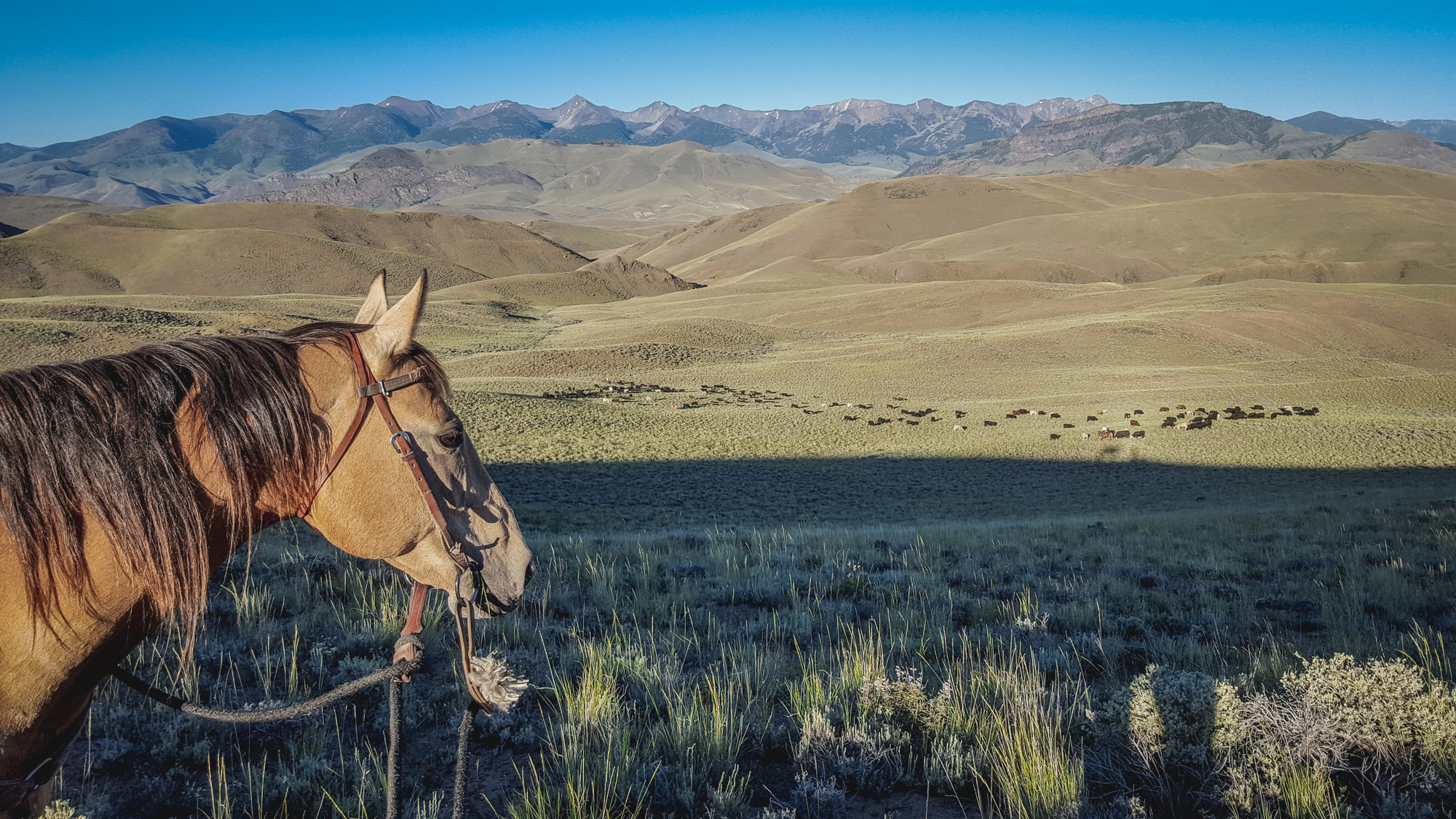
And as Dayna and I drove down the rutted road, it hit me: For Glenn, it was just another day on the range. Managing naughty horses. Managing cattle that want nothing more than to wallow in a creek filled with imperiled bull trout. Accounting for rain and lightning and snow. Watching out for wolves that want to eat cattle. Managing cowboys, some of whom may think this idea is flat-out crazy. Identifying weeds and predator sign and weather patterns. Knowing what wetlands and aspens and sage grouse habitat and upland meadows look like when they’re healthy.
Getting up and doing it all over again.
Working in conservation, I hear a lot of talk about how to scale up our efforts, how to leverage projects, how to influence land management across millions of acres or even the globe. But at some point, all that planning has to hit the ground.
And when it does, it’s work. It’s this. Here is one ranch, one grazing allotment, and it is hard, hard work with no shortage of complexity.
But it’s also where conservation gets real: where you can look out and see food being produced without tearing up the land. See a land where we can have cattle and wolves, sage grouse and flowing streams.
I was glad ranchers like the Elzingas were up to the task, shaping a new way of public lands ranching. And even gladder to be off Natalie’s back.
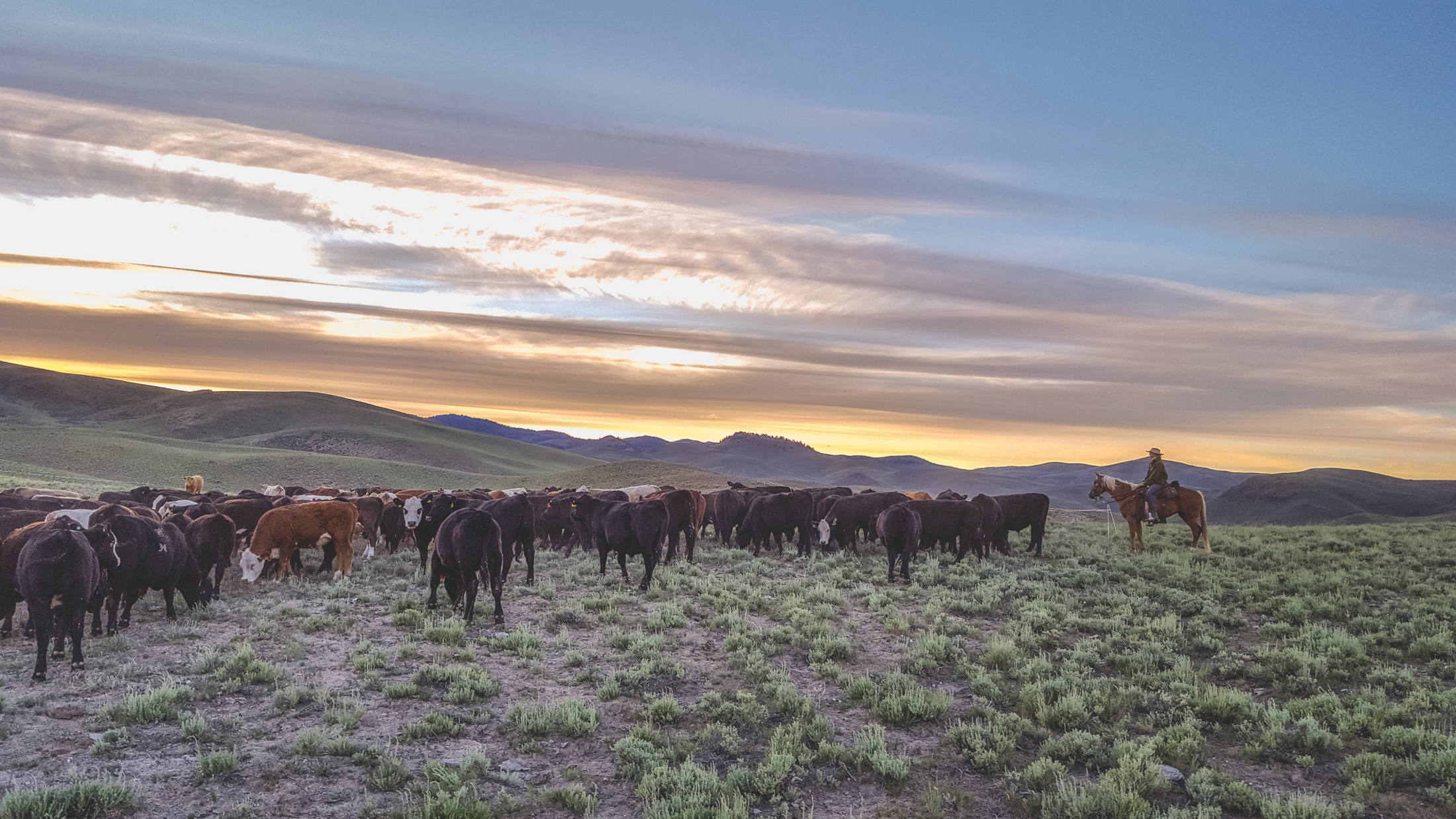




Although some are no doubt familiar with the Lemhis and other public lands nearby, as am I, much has been perhaps purposely smoothed over and ignored in the piece.
For example wolves are shot rather freely in Idaho for 11 of the 12 months of the year (with new rules allowing far more killing than previously).
By the way it is HIGHLY unlikely that the area would be “developed”, an euphemism for paving, populating and excluding nearly all native species.
But I’ll leave behind the Euroamerican fetish of gunning everything down that displeases one – a US western myth which IS fact.
Instead, it is worth noting that Bison, a native western plains and valley ungulate, had a long-evolved habit of , unlike bovines, moving UP , AWAY from riparian areas in the evening, gathering into a tighter herd toward sundown, moving upslope in the sage and brush. This natural, we might say culturally different behavior, as it most probably a learned behavior experienced by calves, and so perpetuated.
Bovines , when experimented upon for behavioral responsivity, do individually gain understanding and change behaviors. But so long as they are domestic and protected, and killed off for human consumption quite early in their lifespan cannot develop natural intelligence.
Bison also happen to prefer earlier-stage grasses, moving along in seasonal migrations without destroying native grasslands.
(again, before guns came, which made their normal, wild herbivorous lives untenable – the southern Plains herd[s] was fast losing numbers by the later 1700s, exploited through the Euroamerican lower Mississippi traders and the Comanche, although the indigenous seduction into the trading that began endangering that population is more complex than I will elaborate here. Only the 1789 Smallpox epidemic, which caused the death of a high proportion of Comanche, saved that herd until the massive Euroinvasion following the early-mid 1800s extinguished it – along with most wolves of the southern plains )
The story is longer than the pretentious fallacy of modern ranchers as “tradition.” it was not until the 1870s, following the subjection (and genocide is not too egregious a term to use here) of the Plains tribes, that European wealthy (admittedly, along with, again, down south, the Spanish and their invited US expats there precisely due to desire to escape any oversight whatsoever by governance – thus the 1830s war and the 1840s negotiation for more war, but I digress.
The British nobility – for in the 1800s that still constituted the wealthy -understood the “free” grazing opportunities occurring with railroad and Indians corralled, were the original ranchers invading.
That means that people alive today ranching only have about the level of grandparents there. The British , you see, had hired the “cowboys”, who lived essentially as slaves or serfs for them. The free grazing and the use of cattlecars transporting “meat” east to the great slaughterhouse cities, from St. Paul to Chicago, to St. Louis, etc., where their meat could be exported back to England, obviated the problem of raising cattle in constantly fractious Ireland.
With the Homestead Act, ranching became a sedentary practice, rather than the open range- Armed and violent disputes occurred, quite less romantic than exist in the minds of those who have never bled and feared in their own homeland.
This is the source, as you can infer, of the anti-government ethic in the interior US west.
It’s all in the literature, including the contemporary local histories, personal communications, available in libraries across the entire west. You can find further corroboration in county records of land “ownership” and transfer.
Having great grandparents from that time, I would walk with an elder relative, asking why the early Victorian houses might have tall cupolas, an uncle answering, “to watch for Indians coming.”
Tradition – gunfire and hate and expropriation (a fancy word to you perhaps, meaning violent taking, stealing). Consider this well.
I note a Shoshone word defining a specific place for water in the text. and hope to assist in reducing the, presumptuous arrogation, false romanticism, and unwarranted parochialism, entirely lacking history or context, in which the article and comments are soaked.
I happen to be biased toward both ungulate AND wolf minds, and the other natives of the ecosystems, and so wish to assist readers in escaping that insular, parochial point of view that so ignores all evolution and history in favor of precious and inaccurate fictions.
What an awesome story! Wow. I wonder if this kind of herding will catch on? It sure does sound like a lot of work, even though it invokes the cowboy songs of old…
Recognizing the right question to ask is actually significantly more important than having a complete response. Good questions challenge your thinking. Studies are incredibly clear that we care about people that pay attention to us. Our objective and goals are unquestionably essentially who we are and who we would like to be. To put it simply, proper questions are our tool for aiding to see the accurate reality around us as opposed to shadowy delineations of it. Ask elementary questions regarding the things which all others takes for certain. People are willing to forgive. They need to enjoy an excellent dialog together with you. We do things for a lot of distinctive purposes. Whenever you ask someone as to what accommodates them, it opens the door to discovering an issue that is definitely extraordinary to that particular individual. It could be a sensationa instance for others when you encourage them to reveal their dreams together with you. Occasionally you don’t need to provide guidance.
I wonder how much we have been thrown off-course by the popular images of ranching, whether in books or films. Start with Owen Wister (The Virginian) who set the standard image. Did he get it right? Or take Clarence E. Mulford and the changing depictions of Hopalong Cassidy. But people who have adventures can’t have this sort of full-time job. If they are riding with the herd, how can they ever find the time to shoot up a saloon? The nearest we get is the cattle drive, and there are movies centred on them, but it isn’t the year-round management that is this.
Keep up the good work!! I am glad to see someone using everything available to successfully ranch with conservation and reduce the impacts to sensitive species and habitat. I hope other ranchers will see what you are doing and begin to adopt your methods for their own ranches. Congratulations!
Congratulations to Matt Miller for writing a very good “diary” of his experience. The photos are wonderful and make me feel that I am there, too! Herding this new way is a good start to help the environment in the 21st century.
I am very impressed with this rancher’s true concern, caring and dedication to protecting the environment and all of the wild creatures from the destruction of the intruder animals . If only all ranchers would care as much. If only they would work hard to protect the land for future generations. Then I would think differently about allowing cattle (or sheep) to graze on public lands.
Trees could grow again if cattle (or sheep) were not destroying the seedlings. Be it quaking aspens, or oak trees, whatever trees native to a particular area could be protected and allowed to grow to full size and health.
What an inspiring story. Finally, hearing about a rancher that cares about the land, his cattle (more than just the monetary value they bring), and the rest of the chain of ecology in his area. Makes me want to leave retirement and go work for this man! I will hope and pray that this ranching technique spreads to other ranchers. The way it is supposed to be gives me a little hope for the future. This is the middle ground I have always argued….good for the ecology, good for the rancher. There is a way to co-exist, or we all wouldn’t be here now. Apparently, one man has rediscovered that way. Kudo’s!!
As far as Matt on horseback…..it was good for a chuckle, although I’m guessing that was not Matt’s opinion!! However, never let go of another man’s horse!!! Whatever were you thinking Matt????
The Elzingas are people who make America great. I applaud how they cattle ranch and still conserve, protect and sustain our public lands for wildlife. I am grateful for all your hard work and setting an example for all of us to follow. Thank you.
Like Glenn & the others. We all need to co-exist. We need more of him; need to relay this message.
What a wonderful account of a great idea to help ranchers, cattle, streams, fish, and wolves live together in a beautiful land. Thank you!
Although it sounded like a great step to me at first, I recall seeing “Before The Flood” on NATGEO w/ Leonardo DiCaprio. So I agree w/ G. Wuerthner’s remarks about the problem of methane gas from our massive raising of cattle being a big problem in the atomosphere. And, I have to wonder if they could use bison, our REAL NATIVE species which used to roam in the millions and created our grass plains and supported people and the other species living in the grasslands until our slaughter of them. Maybe someone knows if they produce methane as much as cattle. I know my doctor said bison is a better eating choice than organic fed cattle. So we buy bison and haven’t eaten beef for years. My husband also found that beef aggravates his arthritis, but bison doesn’t. Personally, for me at 60 I’ve almost gotten to eating chicken or no meat. I also maintain that curbing our human population growth is at the root of solutions for our planet. They used to talk about zero population growth in the 70’s. Also watch “Years of Living Dangerously” and “Parched”. NATGEO and SMITHSONIAN are great for real docmentaries on our pollution.
This was an incredible story…I am forwarding it to my cowboy friend in Australia…he trains and loves horses. I had not expected to read such a great tale. and I love Wolves too, but they have to eat so it becomes a very interesting trade-off. thank you so much Matt and all the people involved. I only eat grass fed beef, usually from New Zealand.
Go figure. If humans actively manage their herds they are more successful AND can live in balance with nature. Well done…well except for contrary Natalie.